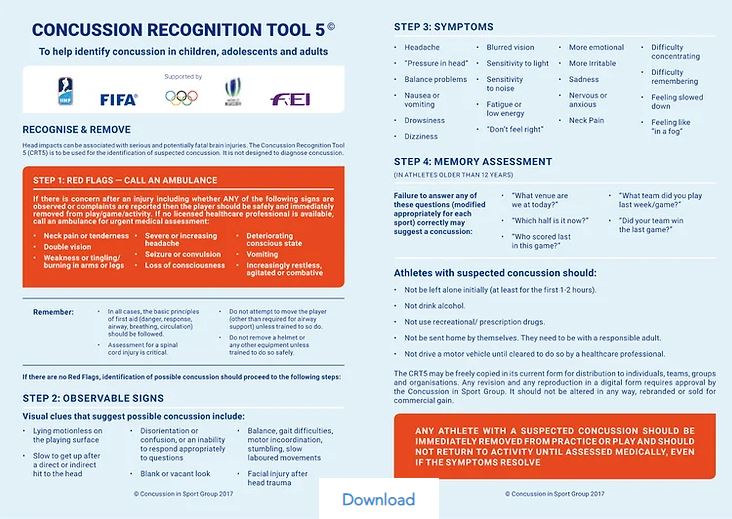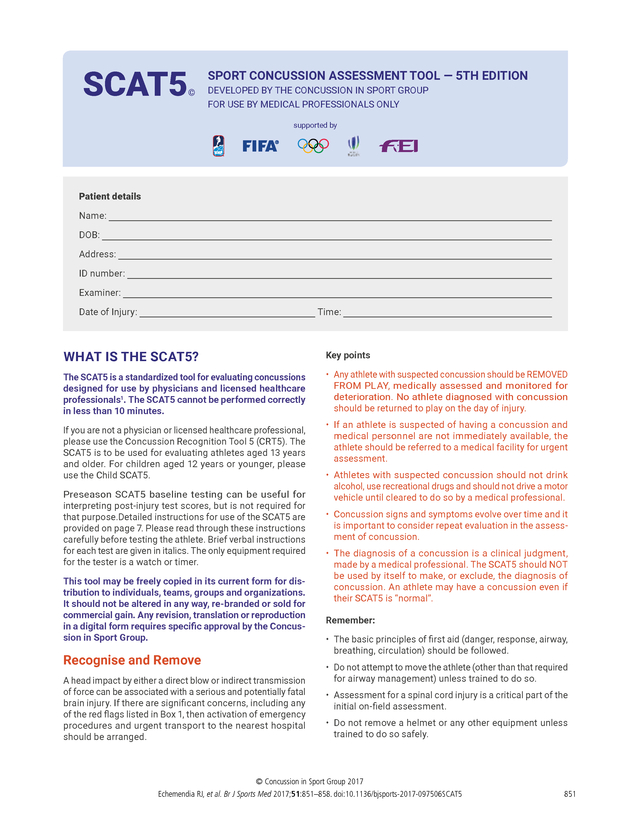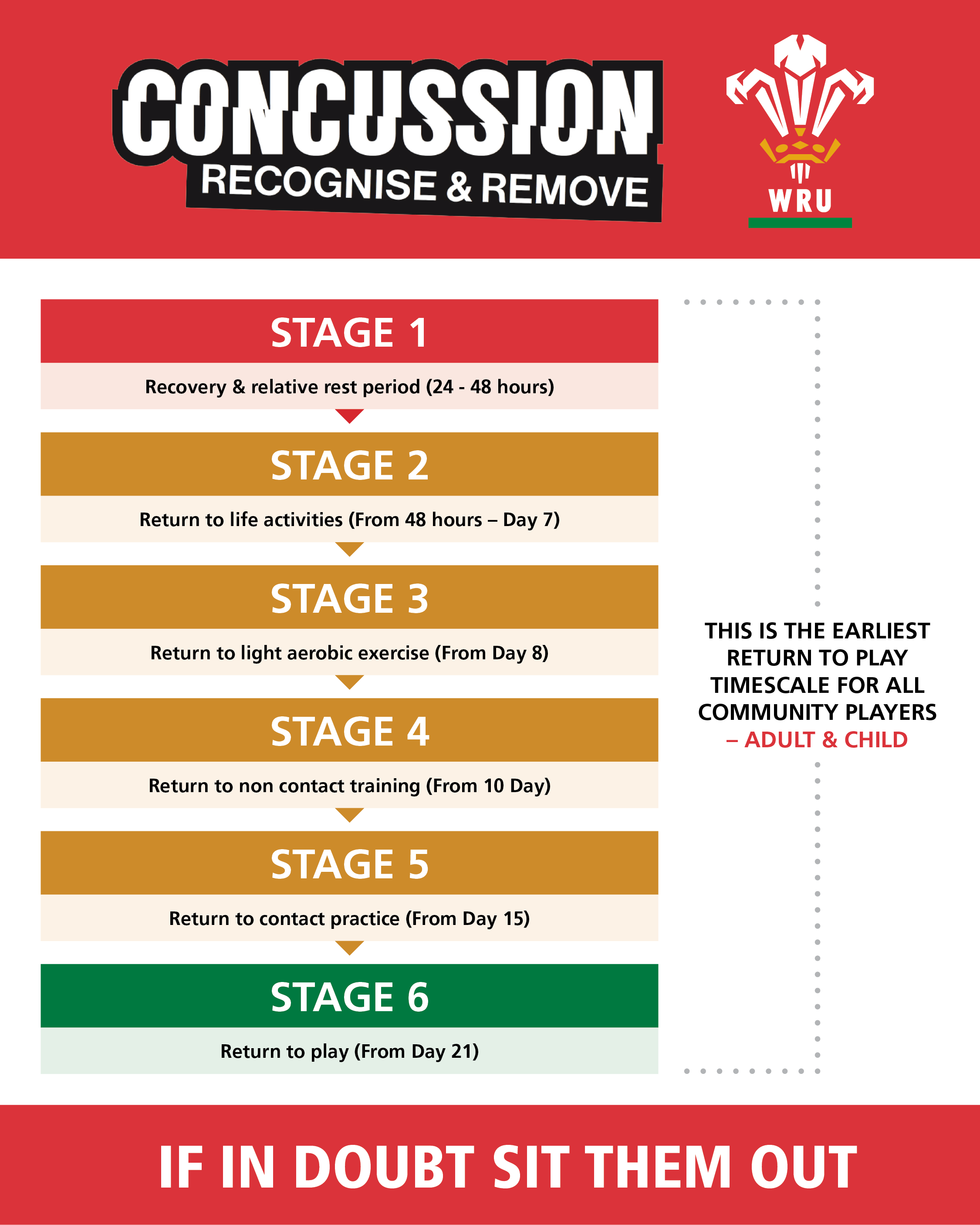Concussions in Sport: Causes, Management, and Long-Term Implications
Introduction
At Physio Tullamore we see some patients present with concussions. Concussions in sports have become a prevalent concern in recent years, drawing attention from athletes, medical professionals, and the general public alike. A concussion is a type of traumatic brain injury (TBI) that can occur in various sports, affecting athletes at all levels of competition. This essay explores the causes of concussions in sport, the methods used to manage them, and the potential long-term implications for athletes.
I. Causes of Concussions in Sport
1.1. Impact-Related Causes
Concussions in sports often result from direct or indirect impacts to the head, face, or neck. These impacts can occur in various ways:
1.1.1. Head-to-Head Collision: In contact sports like football, rugby, and hockey, head-to-head collisions are common causes of concussions. Athletes may collide while attempting tackles, checking opponents, or competing for a loose ball.
1.1.2. Falls: Sports like gymnastics, figure skating, and even soccer can lead to concussions due to athletes falling and hitting their heads on hard surfaces, such as the ground or equipment.
1.1.3. Projectile Impact: Sports involving projectiles like baseball, softball, and cricket can result in concussions when a player is struck by a fast-moving ball, bat, or puck.
1.2. Whiplash-Related Causes
Concussions can also occur without direct head impacts. Whiplash injuries, where the head is rapidly accelerated and decelerated, can result in the brain colliding with the skull's interior. This mechanism is often seen in sports like car racing and horseback riding.
1.3. Cumulative and Repetitive Trauma
Concussions can be the result of cumulative and repetitive trauma over time. In sports where repeated minor head impacts are common, such as soccer and American football, athletes may develop "subconcussive" injuries, which can lead to long-term issues if not managed properly.
II. Management of Concussions in Sport
2.1. Immediate On-Field Assessment

When a potential concussion occurs during a sporting event, prompt assessment by trained medical personnel is crucial. The following steps are typically taken:
2.1.1. Removal from Play: The injured athlete is removed from the game or practice immediately to prevent further injury.
2.1.2. Initial Assessment: An initial assessment of the athlete's condition is performed on the sidelines. This may include evaluating their responsiveness, balance, coordination, and cognitive function.
2.1.3. Sideline Concussion Assessment Tools: Medical professionals often use specific sideline concussion assessment tools, such as the Sport Concussion Assessment Tool (SCAT), to aid in the evaluation process.
2.2. Diagnosis and Evaluation

At Physio Tullamore we recommend you to use a SCAT5 Concussion Assessment form post injury this is a comprehensive evaluation is conducted to diagnose the concussion's severity and determine the appropriate management plan. This evaluation may involve:
2.2.1. Neurological Assessment: A thorough neurological examination, including tests of memory, concentration, and balance, is performed to identify concussion-related deficits.
2.2.2. Imaging Studies: While not always necessary, imaging studies such as CT scans or MRI may be used to rule out more severe brain injuries like bleeding or structural damage.
2.3. Return-to-Play Protocol

The management of concussions includes a structured return-to-play protocol to ensure athletes' safety:
2.3.1. Rest and Recovery: Athletes are advised to rest both physically and mentally until their concussion symptoms resolve. This may involve a temporary break from sports participation, academic adjustments, and reduced screen time.
2.3.2. Graduated Return-to-Play: Athletes progress through a stepwise protocol, gradually increasing physical activity and sports-specific exercises under medical supervision. This progression allows for the monitoring of symptoms and ensures that athletes are not rushed back into competition prematurely.
2.3.3. Clearance from Medical Professionals: Athletes must be cleared by medical professionals with expertise in concussion management before returning to full-contact sports.
III. Long-Term Implications of Concussions
3.1. Post-Concussion Syndrome
In some cases, individuals experience prolonged symptoms known as post-concussion syndrome (PCS). These symptoms may include headaches, dizziness, fatigue, mood disturbances, and cognitive impairments. PCS can significantly impact an athlete's quality of life and may require prolonged medical treatment.
3.2. Chronic Traumatic Encephalopathy (CTE)
One of the most concerning long-term implications of concussions in sport is the potential development of chronic traumatic encephalopathy (CTE). CTE is a neurodegenerative disease linked to repetitive head trauma, characterized by cognitive decline, mood disturbances, and behavioral changes. While not all individuals with a history of concussions develop CTE, the risk increases with repeated exposure to head impacts.
3.3. Cognitive and Emotional Effects
Research has shown that concussions can lead to cognitive and emotional changes, affecting an athlete's memory, attention, and mood regulation. These effects can have a profound impact on an athlete's overall well-being and athletic performance.
3.4. Legal and Ethical Considerations
Concussions in sports have raised legal and ethical concerns regarding athlete safety and responsibility. Lawsuits and discussions about improved concussion management protocols have prompted sports organizations to reevaluate their approach to player safety.
Conclusion
Concussions in sport remain a significant concern due to their potential immediate and long-term effects on athletes. Recognizing the causes of concussions, implementing effective management protocols, and understanding the long-term implications are critical steps in minimizing the risks associated with these injuries. Continued research, improved equipment, and increased awareness are essential elements in the ongoing effort to protect athletes from the devastating consequences of concussions in sport.
For more information on concussion drop us an email or book online www.physiotullamore.com/book-online